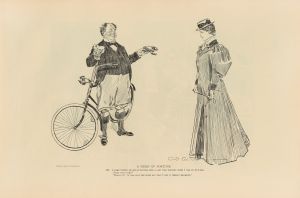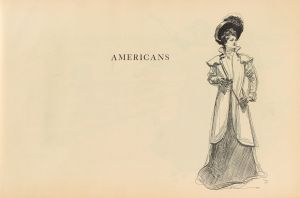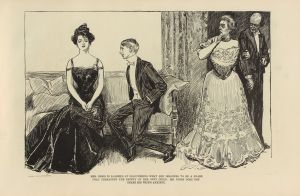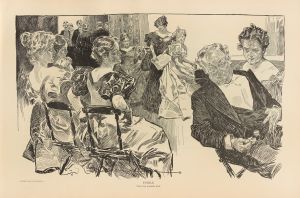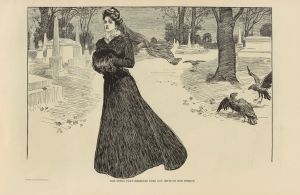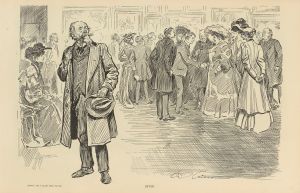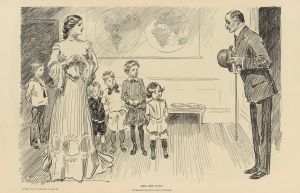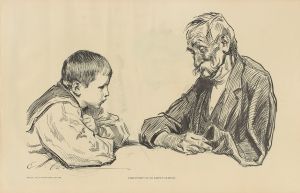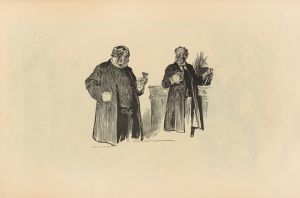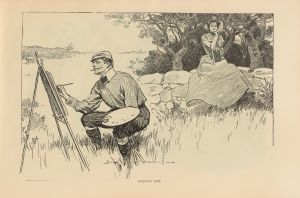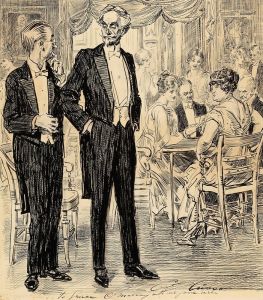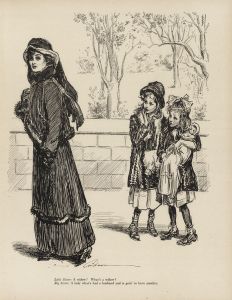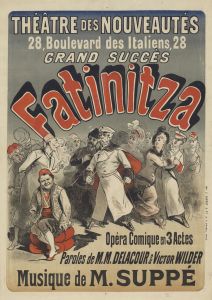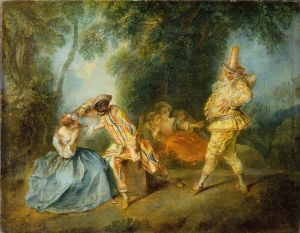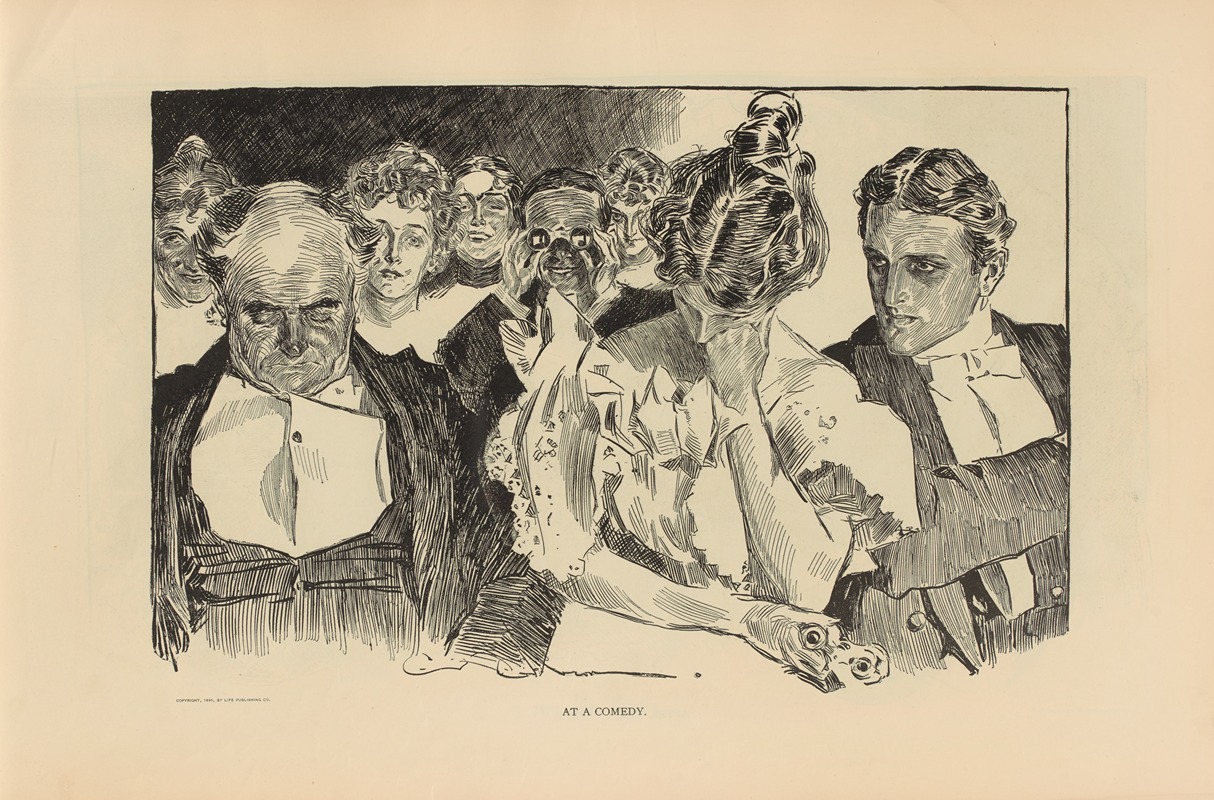
At a comedy
A hand-painted replica of Charles Dana Gibson’s masterpiece At a comedy, meticulously crafted by professional artists to capture the true essence of the original. Each piece is created with museum-quality canvas and rare mineral pigments, carefully painted by experienced artists with delicate brushstrokes and rich, layered colors to perfectly recreate the texture of the original artwork. Unlike machine-printed reproductions, this hand-painted version brings the painting to life, infused with the artist’s emotions and skill in every stroke. Whether for personal collection or home decoration, it instantly elevates the artistic atmosphere of any space.
Charles Dana Gibson was an influential American illustrator, best known for his creation of the "Gibson Girl," a representation of the idealized American woman at the turn of the 20th century. One of his notable works is the illustration titled "At a Comedy." This piece is a part of Gibson's extensive portfolio that captures the social dynamics and cultural nuances of his time.
"At a Comedy" is an illustration that depicts a scene from a theater, capturing the audience's reactions during a comedic performance. Gibson's work is renowned for its detailed and expressive line work, and this piece is no exception. The illustration showcases a cross-section of society, with men and women dressed in the fashion of the late 19th to early 20th century, highlighting the social norms and expectations of the era.
The audience in "At a Comedy" is portrayed with a variety of expressions, from amusement to indifference, reflecting the diverse reactions people have to humor. This diversity in expression is a testament to Gibson's keen observational skills and his ability to convey complex human emotions through simple yet effective line drawings. The illustration not only captures the essence of a theatrical experience but also serves as a social commentary on the different ways people engage with entertainment.
Gibson's work, including "At a Comedy," was widely published in magazines such as Life, Harper's Weekly, and Scribner's, reaching a broad audience and influencing public perceptions of American culture. His illustrations were not just art; they were a reflection of the societal norms, fashion, and gender roles of his time. The "Gibson Girl," for example, became an iconic symbol of femininity and independence, embodying the changing roles of women in society.
"At a Comedy" fits within this broader context of Gibson's work, as it subtly comments on the social interactions and cultural settings of the period. The theater, as depicted in the illustration, was a popular form of entertainment and a social gathering place where people from different walks of life could come together. Through his art, Gibson provides a window into this world, capturing the nuances of social behavior and the shared experience of enjoying a performance.
Gibson's illustrations are characterized by their attention to detail and their ability to convey a narrative without the need for words. "At a Comedy" is a prime example of this, as it tells a story through the expressions and body language of its subjects. The piece is a snapshot of a moment in time, preserved through Gibson's masterful artistry.
In summary, "At a Comedy" by Charles Dana Gibson is a significant work that exemplifies the artist's skill in capturing the essence of American society during the late 19th and early 20th centuries. Through his detailed and expressive illustrations, Gibson not only entertained but also provided insightful commentary on the cultural and social dynamics of his era.





